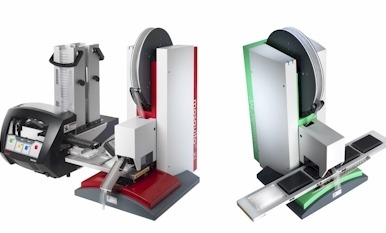
TTP Labtech will be showcasing automated liquid handling for a range of miniaturised screening applications.
TTP Labtech is featuring the mosquito portfolio of low volume liquid handlers for assay miniaturisation in a range of applications, on booth #1213 at SLAS 2013 (January 12-16, 2013).
Fast dispense rates, zero cross-contamination and superior precision are guaranteed by the company across the mosquito range, irrespective of liquid viscosity or environmental conditions, even when handling volumes as low as 25 nL.
Delegates can also find out more about some of the many applications benefiting from assay miniaturisation, in four poster presentations from 1-3 pm on January 14.
The mosquito HTS is a nanolitre liquid handler optimised for the handling of 1.2 µL all the way down to 25 nL, making it well-suited to miniaturised screening assay formats.
Furthermore, aspirating from any source plate leaves minimal dead volumes (less than 0.5 ?L), a critical cost area to consider when capitalising on the savings of miniaturisation in a screening programme.
With intuitive operating software, the mosquito HTS is easily programmed to perform a variety of complex procedures, including traditional serial dilutions and assay-ready plate preparations, allowing effective hit-confirmation from screening assays across multiple compound concentrations.
The mosquito HTS is also capable of reformatting between different plate types within the same protocol, even from standard 96-well formats directly to high-density 1536-well plates.
TTP Labtech’s poster presentation MP117, details how the mosquito HTS is ideal in automated liquid handling of low volumes for biological assay and screen set-up.
Building on the technology of the mosquito HTS, the mosquito HV bridges the gap between nanolitre and microlitre liquid handling, ensuring rapid and accurate dispensing of sample volumes from 0.5 to 5 µL, regardless of viscosity.
This benefits a range of applications, particularly PCR where assay miniaturisation results in significant cost savings. The mosquito HV also offers outstanding accuracy, to within 2% of target volume, while retaining other unique features of the mosquito range, including its proprietary positive displacement pipetting technology.
The mosquito HV’s larger disposable micropipettes also ensure zero cross-contamination, vital in PCR assays, while reaching right to the bottom of wells in order to minimise dead volume to under 1 µL per well.
To discover how the mosquito HV achieves reliable pipetting in a range of disciplines within both academia and the drug discovery industry, delegates can attend the poster presentation “mosquito HV: bridging the gap for automated low volume liquid handling” at stand MP116.
For fully automated screening operations on a larger scale, the mosquito X1® ensures accurate and precise liquid handling throughout the 25 nL – 1.2 µL range.
This system is easily integrated into larger screening systems for precision sampling of any individual well in any plate, for example the BioFocus system for fully automated nanolitre hit-picking.
Working in synergy with the Thermo Scientific RapidStak plate stacker, selected hit wells are seamlessly transferred using mosquito X1 from a variety of screening plates directly to the secondary screening phase, without the need for further dilution.
Poster MP091 presents an integrated solution for automated nanolitre hit-picking at BioFocus. Covering a range of volumes, there is a mosquito instrument to suit any automated screening application.
Looking to miniaturise all parts of the workflow, TTP Labtech’s dragonfly automated non-contact screen optimiser regulates the delicate balance of multiple parameters fundamental to the success of any subsequent screening programme.
Novel positive displacement pipetting technology ensures robust, repeatable and reliable results handling a wide range of fluid viscosities, from volumes as low as 0.5 µL. Poster MP095 explores automation of assay optimisation studies for efficient and rapid set-up in a wide range of biological applications.




